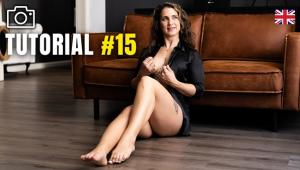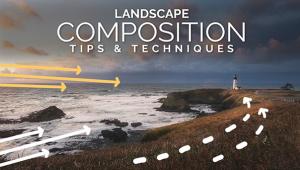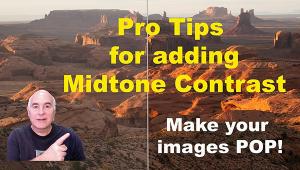Commentary
I talked with a photographer recently who has been doing digital for about two years and he said he's still on a "very steep learning curve." The fact is that many photographers are plunking down good money for digital cameras who haven't the foggiest notion of what they're in for, with some not even having the benefit of having shot a film camera in the past.
True, may digital cameras now have Scene modes, ala the amateur film SLR and point and shoot camera. And this does alleviate the problem somewhat, although Night Portrait and "Child" mode are not quite intuitive, although we can all sort of imagine when they should be used. True, there is a new generation of "smart" digicams coming down the pike, ones where sensors recognize the correct white balance without the user having to do a thing and those that actually recognize the form of a face and focus accordingly. And some new cameras, the most recent I've seen from Nikon and Casio, have prompts and wizards that can help us learn while we shoot.
One could blame the way in which manufacturers define various aspects of the digital photography realm. Take resolution-in some cameras it's defined as Good, Better and Best and in others SQ, HQ and SHQ, or Large, Normal and Small and of course the newly popular RAW+ modes.
And how about color space? Do you want sRGB, Adobe RGB or sRGB Landscape? And when should you Sharpen or not, and by how much, and what about Parameter 1 or Parameter 2? When film SLRs got very complicated in their heyday, which to me was a case of over-designing, only the most diehard stayed to play. The amateur-oriented digital SLRs we've seen of late have become a bit less complicated, but they're still a handful for most folks to master. Indeed, the white balance options on some digital cameras I've seen expect that people understand the Kelvin scale. This allows for some very fine-tuning of white balance, but how'd you like to master the principles of the Kelvin scale right before your next trip to Yellowstone?
Much of this has to do with staking out territory, with proprietary routes being the way manufacturers bring the user into one house and make sure they don't leave. The Raw format is a case in point. Every camera maker has their own version of Raw, unreadable by the software of other makers. Third-party Raw converter software is sprouting up that can read Raw cross-manufacturer, albeit with constant updates on their web sites. And Adobe has jumped in with their own DNG Raw setup, which they laid out for all to see last year as a proposed standard, but we haven't seen too many major makers jump on board for this. But manufacturers claim that the Adobe DNG misses the point and sacrifices the true depth and character of their own Raw files.
While there are some people who revel in the intricacies of their camera and like to spend their off hours exploring the third tier of their digital camera menu, most folks feel like this is getting more complicated by the minute. My concern is that we're just complicating matters more than necessary. For many, all this jargon and lack of standards gets in the way of why they got a digital camera in the first place-to make pictures they can easily share and be proud of.
Of course this is a technology in its infancy, and a certain amount of freebooting is part of the spirit of innovation. And no one wants a bunch of me-too products on the shelves and straightjackets on creative design and innovation. But we're no longer dealing with early adoption in digital photography. Digital is mainstream, and it's time we recognized that establishing standards, and agreeing to them for all cameras, will make all our digital lives so much easier.
If this means making cameras with less choices, so be it. How about, for example, changing all those resolution codes to two-print and web. Or just always making a copy for web and e-mail along with the high resolution print exposure. And as to Raw mode, well, let's lobby for one Raw standard without all the mumbo jumbo of manufacturer, and even camera specific formats.
Of course, there are many of us who enjoy wrestling with our camera, or those who spend countless hours figuring out a Zone System exposure scheme for their multi-level digital SLR. But to my mind it's time to stop loving the terminology and start paying attention to the promise of digital photography. It's not that we should dumb the cameras down, but we should make the incredible capabilities of these cameras even more transparent to the end user. We should get all the benefits we can without having to always grapple with new jargon.
- Log in or register to post comments












































